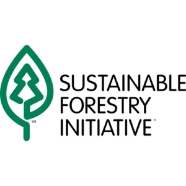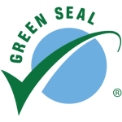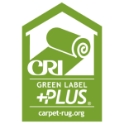Spring is in full swing and it’s really time to start thinking about how you will responsibly maintain your facility, office, or place of business this year. The movement to employ green cleaning practices in commercial facilities, office buildings, and in businesses has never been more popular and crucial. Cleaning green is nontoxic, environmentally safe, and ultimately protects the health and wellbeing of hard-working employees (a successful business depends on healthy employees).
Below, we’ve gathered the most compelling chemical cleaning facts from safegreencleaners.com that will surely inspire (if not convince) you and your facility or business to make the switch to green cleaning. Click here for more info about how to choose a green commercial cleaning team.
Chemical Cleaning Products – The Deadly Truth
• 1 out of every 3 chemical cleaning products contains ingredients known to cause human health or environmental problems1
• Commercial cleaning companies are under no legal obligation to research how their products might harm human health.
• The EPA ranks poor indoor air quality among the top five environmental risks to public health. Interestingly, five out of 10 Americans are not aware of this fact.*
• The U.S. Environmental Protection Agency (EPA) found the levels of air pollution inside the home can be two to five times higher (and sometimes even 100 times higher) than outdoor levels.*
• An EPA study concluded that the toxic chemicals in household cleaners are 3 times more likely to cause cancer than outdoor air.2
• A study comparing women who work ouside the home with women who work at home , found a 54% higher risk of developing cancer in women who work at home. The study concluded that this is a direct result of the chemicals in household products.3
• On average, poison centers handle one poison call every 1.5 seconds4
• 89% of all poison exposures occur in the home4
• 92% of exposures involve only one poisonous substance4
• 2,403,539 human exposures to poisons were reported in 20064
• 8.9% of the human exposures involved household cleaning substances4
• Cleaning substances are the 3rd most common reason for exposure to poison in adults4
• 51% of the human exposures to poison in 2006 involved children under 6 years old4
• Household cleaning substances are the second most common reason for pediatric exposure to poison4
• Unintentional ingestion of toxic household chemicals is associated with an annual average of 39 deaths to children under age 5, and an estimated 87,700 children treated in hospital emergency rooms. These poisoning incidents resulted in an estimated societal cost of almost $2.3 billion.5
• Americans generate over 38 million tons of hazardous waste per year 6
• Chemical manufacturing accounts for 21 million tons (55%) of the hazardous waste 6
• Cleaning Compounds and soap account for 30,948 tons annually 6
1GovPro.com, “Purcasers Buy Safer, Effective, and Affordable Commercial Cleaning Chemicals,” no date.
*The American Lung Association “Airing the Truth About Indoor and Outdoor Air Pollution”
http://www.lungusa.org/site/pp.asp?c=dvLUK9O0E&b=107829
2Consumer Product Safety Commission and Environmental Protection Agency, “The Inside Story A Guide to Indoor Air Quality” CPSC Document #450
no date, available at: http://www.cpsc.gov/cpscpub/pubs/450.html
3International Society of Indoor Air Quality and Climate, Proceedings, 5th International Conference on Indoor Air Quality and Climate: Indoor Air ’90,
Toronto (Canada) 1990.
4Bronstein, Alvin C., Spyker, Daniel A., Cantilena Jr, Louis R. Green, Jody, Rumack, Barry H. and Heard, Stuart E. (2007) ‘2006 Annual Report of the American Association of Poison Control Centers’ National Poison Data System (NPDS)’, Clinical Toxicology, 45:8, 815 – 917 available in pdf here
5U.S. CONSUMER PRODUCT SAFETY COMMISSION “2007 Performance and Accountability Report” 2007, available at:
http://www.cpsc.gov/cpscpub/pubs/reports/2007par.pdf
6United States EPA “The National Biennial RCRA Hazardous Waste Report” 2005, available at: http://www.epa.gov/epaoswer/hazwaste/data/br05/national05.pdf













